Marine Life & Conservation
Humankind… The Menace To Sharks
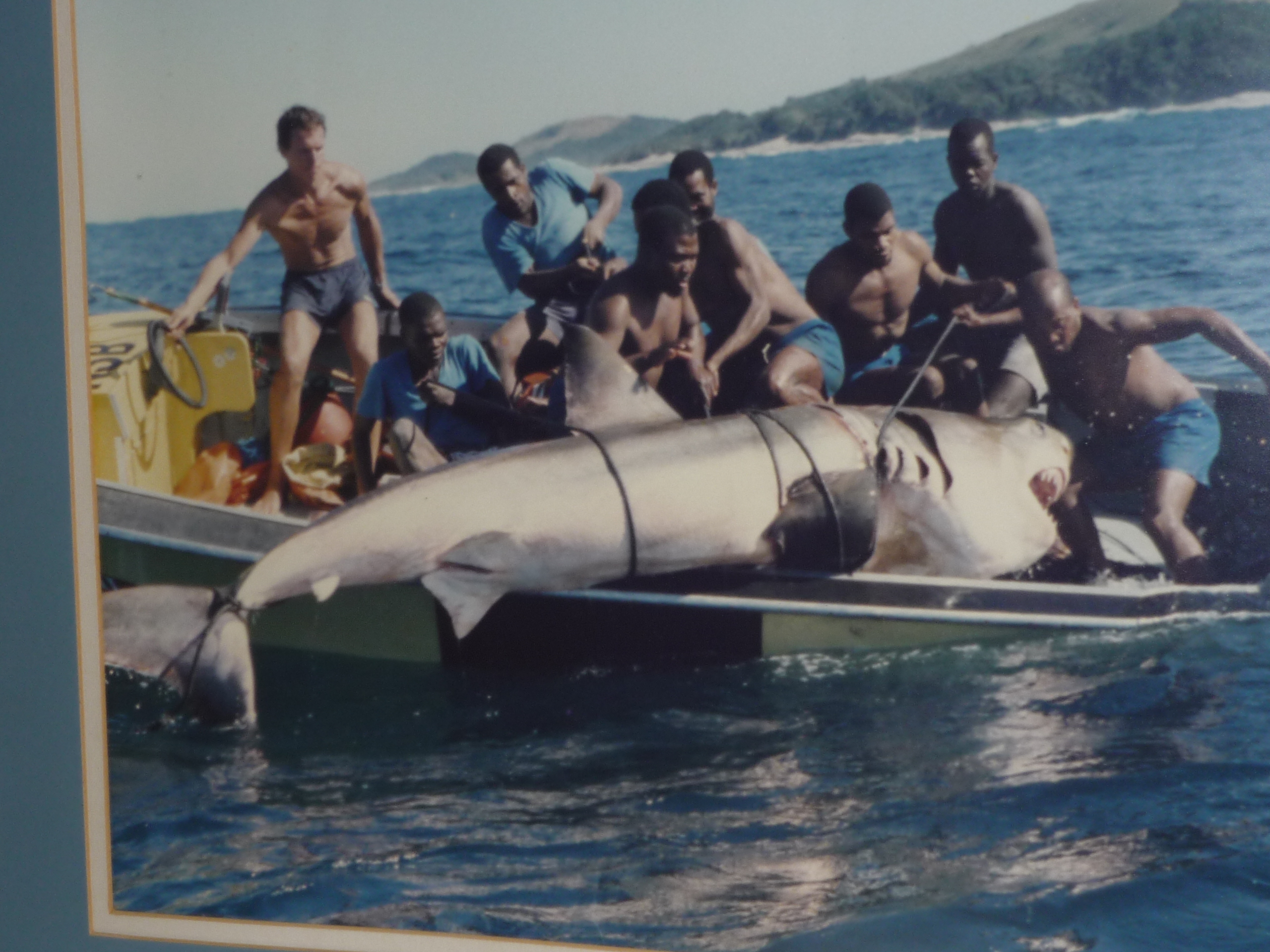
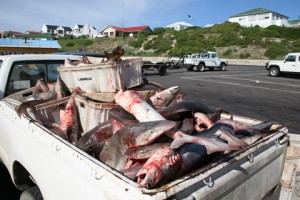 Results of pollution in the seas are not fully known, but what has been learned is that this practice not only endangers marine life, but human life as well. Algae that grow on reefs at the sea bottom collect toxins and small fish feed on these algae, ingesting these toxins with their meal. A tuna happens to feed on these smaller fish and in so doing, add the toxins from the algae plus all the toxins of every small fish it has eaten, into its system. A shark is the apex predator of the ocean and feeds on tuna, adding all the toxins from the algae from the reef plus every fish that has eaten it plus every small fish down the food chain, all carrying toxic waste into the shark! Sharks are killed by the thousands each day and the meat is consumed with the fins ending up as shark fin soup. This is then consumed by the greatest predator – the human being.
Results of pollution in the seas are not fully known, but what has been learned is that this practice not only endangers marine life, but human life as well. Algae that grow on reefs at the sea bottom collect toxins and small fish feed on these algae, ingesting these toxins with their meal. A tuna happens to feed on these smaller fish and in so doing, add the toxins from the algae plus all the toxins of every small fish it has eaten, into its system. A shark is the apex predator of the ocean and feeds on tuna, adding all the toxins from the algae from the reef plus every fish that has eaten it plus every small fish down the food chain, all carrying toxic waste into the shark! Sharks are killed by the thousands each day and the meat is consumed with the fins ending up as shark fin soup. This is then consumed by the greatest predator – the human being.
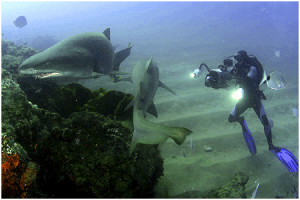 This process is recognised as Biomagnification; the toxins lodge in the fat and are not water soluble, neither can urination cleanse the system. The USDA has recommended that pregnant women, children and women of child-bearing age should not eat any shark-derived substance due to the excessive level of mercury therein. However, shark meat is eaten in many parts of the world but in certain countries it is viewed with distaste, possibly due to its proclivity to eat anything, as they are scavengers. Certainly the most widely found shark species eaten is the piked dogfish ( Squalus acanthias), which is tabled in Britain as “rock salmon” and in Australia as “flake.” Whatever it is called, this +/- one metre member of the shark family ends up on the menu. In closing this account of commercial use of shark products, the skin is turned into exceptional leather in use for belts, lady’s handbags and shoes. In reality, the skin, just like the leopard, looks better when the live animal is wearing it.
This process is recognised as Biomagnification; the toxins lodge in the fat and are not water soluble, neither can urination cleanse the system. The USDA has recommended that pregnant women, children and women of child-bearing age should not eat any shark-derived substance due to the excessive level of mercury therein. However, shark meat is eaten in many parts of the world but in certain countries it is viewed with distaste, possibly due to its proclivity to eat anything, as they are scavengers. Certainly the most widely found shark species eaten is the piked dogfish ( Squalus acanthias), which is tabled in Britain as “rock salmon” and in Australia as “flake.” Whatever it is called, this +/- one metre member of the shark family ends up on the menu. In closing this account of commercial use of shark products, the skin is turned into exceptional leather in use for belts, lady’s handbags and shoes. In reality, the skin, just like the leopard, looks better when the live animal is wearing it.
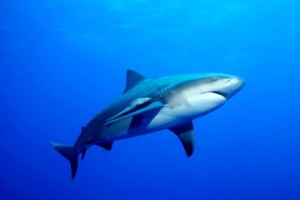 Sharks are the very essence of necessity in the ocean as they keep the waters clean and healthy, cleaning up dead or dying fish as well as sick specimens lower down the food chain. In fact, without them, there would be a proliferation of predators beneath them resulting in a paucity of specific prey items being available. This is due to the fact that large sharks are indeed slow breeders, very much slower than the predatory species below them. As an example, the dusky shark ( Carcharhinus obscurus) may take up to twenty two years to replace itself in the ocean. That is how long it takes to reach maturation and become available for breeding. Very little is known about the breeding cycle of the large sharks that are erroneously labelled “man- eaters.” The Great White, Tiger and the Bull sharks breeding biology has proved almost impossible to record. They do not breed in captivity, unlike large terrestrial or avian predators, where scientific evidence is available. Therefore, of the four hundred shark species in the oceans, comparatively very little is well or reliably documented in this respect.
Sharks are the very essence of necessity in the ocean as they keep the waters clean and healthy, cleaning up dead or dying fish as well as sick specimens lower down the food chain. In fact, without them, there would be a proliferation of predators beneath them resulting in a paucity of specific prey items being available. This is due to the fact that large sharks are indeed slow breeders, very much slower than the predatory species below them. As an example, the dusky shark ( Carcharhinus obscurus) may take up to twenty two years to replace itself in the ocean. That is how long it takes to reach maturation and become available for breeding. Very little is known about the breeding cycle of the large sharks that are erroneously labelled “man- eaters.” The Great White, Tiger and the Bull sharks breeding biology has proved almost impossible to record. They do not breed in captivity, unlike large terrestrial or avian predators, where scientific evidence is available. Therefore, of the four hundred shark species in the oceans, comparatively very little is well or reliably documented in this respect.
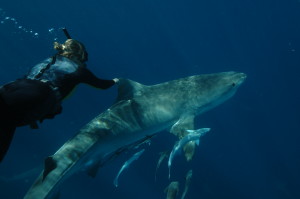 The three species above are well known to the reader as coming into conflict with recreational bathers and surfers alike. It is unfortunate that these incidents occur; the sea is there for our enjoyment, but then again it is also the domain of the shark. Scuba divers, more than anyone, know the attendant risks when entering the water, yet they accept that they are in the environment of the shark and behave accordingly. Today, many divers have experienced the thrill of encountering a Tiger or Great White and have taken a “ride” holding on to the animal. In most cases, the “passenger” has not worn scuba gear as the air bubbles emanating from the breathing apparatus may cause the animal certain disquietude. A female friend of mine has done “ballet” with an Oceanic White Tip shark. It is by no means recommended that EVEYONE try this but these are facts and if the conditions are favourable and the person respectful and qualified, no greater “rush” is possible! Swimming with an ocean apex predator!
The three species above are well known to the reader as coming into conflict with recreational bathers and surfers alike. It is unfortunate that these incidents occur; the sea is there for our enjoyment, but then again it is also the domain of the shark. Scuba divers, more than anyone, know the attendant risks when entering the water, yet they accept that they are in the environment of the shark and behave accordingly. Today, many divers have experienced the thrill of encountering a Tiger or Great White and have taken a “ride” holding on to the animal. In most cases, the “passenger” has not worn scuba gear as the air bubbles emanating from the breathing apparatus may cause the animal certain disquietude. A female friend of mine has done “ballet” with an Oceanic White Tip shark. It is by no means recommended that EVEYONE try this but these are facts and if the conditions are favourable and the person respectful and qualified, no greater “rush” is possible! Swimming with an ocean apex predator!
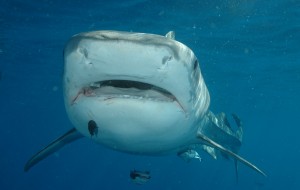 Apart from by-catch and gill nets, shark finning, over-fishing, coral destruction and pollution are top of the list with regard to decimation of marine life. Deep sea trawling has proved to be the number one culprit in killing large species of shark and these are hauled aboard, their fins cut off and the squirming animal tossed back into the sea to suffocate. Notwithstanding this awful slaughter, many other harmless forms of marine life are also victims of this “method.” Dolphins, rays, turtles and coral are to name a few. The very ecosystem is damaged every time sea bottom trawling is commenced. Apparently no legislation is in place to prevent bottom trawling but the consequences will be felt in the not too distant future.
Apart from by-catch and gill nets, shark finning, over-fishing, coral destruction and pollution are top of the list with regard to decimation of marine life. Deep sea trawling has proved to be the number one culprit in killing large species of shark and these are hauled aboard, their fins cut off and the squirming animal tossed back into the sea to suffocate. Notwithstanding this awful slaughter, many other harmless forms of marine life are also victims of this “method.” Dolphins, rays, turtles and coral are to name a few. The very ecosystem is damaged every time sea bottom trawling is commenced. Apparently no legislation is in place to prevent bottom trawling but the consequences will be felt in the not too distant future.
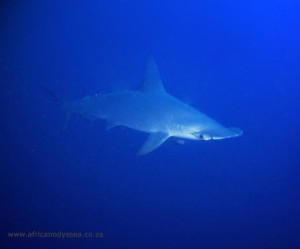 I was once asked, “Why do you suppose that nets are used along the popular beaches?” My answer to that was “To protect the recreational bathers from a potentially harmful encounter with a shark?” The answer to my reply stunned me. “No, to cull sharks!” This form of affording protection is outdated and other methods may be employed to achieve the same results. The current gill nets being used in South African and Australian waters have a mesh size large enough to allow the head of a biggish shark to enter and then ensnare the animal around the gill slits. No shark can swim backwards, so without being able to flow water through the gills, drowning ensues. Thousands of forms of sea life are killed annually by gill netting, in spite of the fact that fewer and fewer sharks are netted. But the nets remain.
I was once asked, “Why do you suppose that nets are used along the popular beaches?” My answer to that was “To protect the recreational bathers from a potentially harmful encounter with a shark?” The answer to my reply stunned me. “No, to cull sharks!” This form of affording protection is outdated and other methods may be employed to achieve the same results. The current gill nets being used in South African and Australian waters have a mesh size large enough to allow the head of a biggish shark to enter and then ensnare the animal around the gill slits. No shark can swim backwards, so without being able to flow water through the gills, drowning ensues. Thousands of forms of sea life are killed annually by gill netting, in spite of the fact that fewer and fewer sharks are netted. But the nets remain.
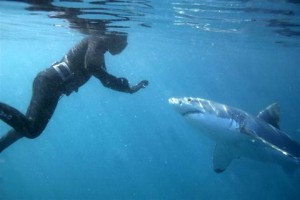 The Red List of the IUCN (The World Conservation Union) 2008 contains the names of endangered animals and plants and unfortunately includes many shark species. Of the nearly 400 species of shark, 100 species appear on the list and are being commercially exploited daily. The following list of well-known species is an indication of the seriousness and sustainability of these animals in the future:
The Red List of the IUCN (The World Conservation Union) 2008 contains the names of endangered animals and plants and unfortunately includes many shark species. Of the nearly 400 species of shark, 100 species appear on the list and are being commercially exploited daily. The following list of well-known species is an indication of the seriousness and sustainability of these animals in the future:
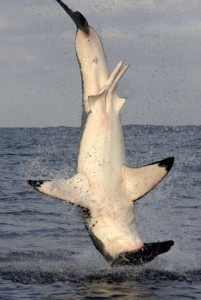 Great White Shark…..VU (threatened and vulnerable)
Great White Shark…..VU (threatened and vulnerable)
Great hammerhead….DD (data deficient)
Hammerhead sp……..LR/nt (in a threatened category in the near future)
Tiger Shark…………….LR/nt ( “ “ “)
Bull Shark………………LR/nt (“ “ “)
Raggedtooth Shark…VU (threatened and vulnerable)
As more data comes to light, the present picture will not show any improvement.
 Human Beings have a fear of predators from early childhood and this fear is exacerbated into adulthood. The word “shark” conjures up an image of being eaten alive or horrific injuries being inflicted. No thought is given to the horrors Human Beings inflict on each other but that invisible “thing” lurking in the sea is beyond words and must be done away with. Sharks are not wanton killers waiting for a person to enter the sea in order to get a meal! If this was the case, over-population of the human race would be reduced. Extinction is irreversible and, for us, to be responsible for having ONE species of animal go that way is unforgivable. Sharks have inhabited the oceans for millennia, because… that is where they are meant to be.
Human Beings have a fear of predators from early childhood and this fear is exacerbated into adulthood. The word “shark” conjures up an image of being eaten alive or horrific injuries being inflicted. No thought is given to the horrors Human Beings inflict on each other but that invisible “thing” lurking in the sea is beyond words and must be done away with. Sharks are not wanton killers waiting for a person to enter the sea in order to get a meal! If this was the case, over-population of the human race would be reduced. Extinction is irreversible and, for us, to be responsible for having ONE species of animal go that way is unforgivable. Sharks have inhabited the oceans for millennia, because… that is where they are meant to be.
Main Photo by Trevor Krull
Blogs
The Ocean Cleanup Breaks 10,000,000 KG Barrier

The Ocean Cleanup, the global non-profit project, has removed a verified all-time total of ten million kilograms (22 million lbs.) of trash from oceans and rivers around the world – approximately the same weight as the Eiffel Tower.
To complete its mission of ridding the oceans of plastic, The Ocean Cleanup uses a dual strategy: cleaning up the Great Pacific Garbage Patch (GPGP) to remove the plastic already afloat in the oceans, while stopping the flow of plastic from the world’s most polluting rivers.
Through cleaning operations in the GPGP and in rivers in eight countries, the cumulative total of trash removed has now surpassed ten million kilograms. This milestone demonstrates the acceleration of The Ocean Cleanup’s impact, while underlining the astonishing scale of the plastic pollution problem and the need for continued support and action.
While encouraging for the mission, this milestone is only a staging point: millions more tons of plastic still pollute our oceans and The Ocean Cleanup intends to continue learning, improving and innovating to solve this global catastrophe.
This announcement comes as governments from around the world meet to continue negotiations to develop a new legally binding instrument to end plastic pollution at INC4 in Ottawa, Canada. Representatives of The Ocean Cleanup will be in attendance and the organization will be urging decision-makers to collaborate towards a comprehensive and ambitious global treaty which addresses plastic at all stages of its life cycle and in all marine environments worldwide, including in areas beyond national jurisdiction.
It is encouraging to see that the need for remediation is reflected in the various options for potential treaty provisions. It is essential that the final treaty contains clear targets for the remediation of legacy plastic pollution, and reduction of riverine plastic emissions.
Tackling plastic pollution requires innovative and impactful solutions. The treaty should therefore incentivize the innovation ecosystem by fostering innovations that make maximal use of data, technology and scientific knowledge – such as those designed and deployed by The Ocean Cleanup.
‘After many tough years of trial and error, it’s amazing to see our work is starting to pay off – and I am proud of the team who has brought us to this point.’ said Boyan Slat, Founder and CEO of The Ocean Cleanup. ‘While we still have a long way to go, our recent successes fill us with renewed confidence that the oceans can be cleaned.’
The Ocean Cleanup was founded in 2013 and captured its first plastic in 2019, with the first confirmed catch in the GPGP coming soon after the deployment of Interceptor 001 in Jakarta, Indonesia. After surpassing one million kilograms of trash removed in early 2022, the non-profit project has since progressed to the third iteration of its GPGP cleaning solution, known as System 03, and a network of Interceptors currently covering rivers in eight countries, with more deployments set for 2024.
About The Ocean Cleanup
The Ocean Cleanup is an international non-profit organization that develops and scales technologies to rid the world’s oceans of plastic. They aim to achieve this goal through a dual strategy: stemming the inflow via rivers and cleaning up the legacy plastic that has already accumulated in the ocean. For the latter, The Ocean Cleanup develops large-scale systems to efficiently concentrate the plastic for periodic removal. This plastic is tracked and traced through DNV’s chain of custody model to certify claims of origin when recycling it into new products. To curb the tide via rivers, The Ocean Cleanup has developed Interceptor™ solutions to halt and extract riverine plastic before it reaches the ocean. Founded in 2013 by Boyan Slat, The Ocean Cleanup now employs a broadly multi-disciplined team of approximately 140. The foundation is headquartered in Rotterdam, the Netherlands.
For more information, visit: theoceancleanup.com and follow @theoceancleanup on social media.
Marine Life & Conservation
Steve Backshall to headline Shark Trust’s flagship event: For the Love of Sharks

Join a host of amazing, shark loving, speakers including Steve Backshall and the Shark Trust team for an evening celebrating shark conservation at the Royal Geographical Society in London this November.
Date: 29th November 2024
Time: 6-10pm
Location: Royal Geographical Society, London
Tickets: https://www.sharktrust.org/Event/flos24
The event will be a celebration of all things shark. Those lucky enough to get hold of tickets will hear from engaging guest speakers with a passion for sharks.
The line-up includes (*subject to change if unforeseen circumstances arise)
Steve Backshall: One of television’s busiest presenters, BAFTA award-winning wildlife expert Steve has been passionate about the wild world ever since he was young.
Steve’s impressive TV career has taken him all around the world, investigating a wide array of species and environments. Steve has filmed over 100 hours of children’s wildlife programmes with the BAFTA award winning Deadly 60 franchise and recently, with Sky Nature, for his new series ‘Whale with Steve Backshall’. He has been a patron for the Shark Trust for 10 years.
Simon Rogerson: is a photojournalist specialising in natural history, diving and the sea.
He is editor of SCUBA magazine, the official journal of the British Sub-Aqua Club. Simon started his career as a crime reporter but gravitated towards his ‘less depressing’ interest in underwater exploration, joining the staff of DIVE magazine in 1999. In 2005 he was named ‘Editor of the Year’ in the PPA’s Independent Publishing Awards. Simon also works as a freelance writer, contributing frequently to the Sunday Times and Telegraph, in addition to BBC Wildlife, Esquire, and a host of international diving magazines. He is the author of a book, Dive Red Sea, published by Ultimate Sports. Now based in Berkshire, Simon has been a Patron of the Shark Trust for 20 years.
More speakers to be announced soon. Head to the Shark Trust website to learn more.
The evening will also allow guests the final chance to see the Oceanic 31, shark art exhibition. Some of the artwork will be auctioned/raffled at the event, while the rest will be auctioned online to raise money for the Shark Trust Oceanic Programme.
For the Love of Sharks is an evening with something for everyone who is interested and fascinated by sharks. Join the Shark Trust, their Patrons, Trustees and Staff, along with a host of supporters for this celebration of shark conservation.
For more information or to buy a ticket: https://www.sharktrust.org/Event/flos24
-

 News3 months ago
News3 months agoCapturing Critters in Lembeh Underwater Photography Workshop 2024: Event Roundup
-

 Marine Life & Conservation Blogs3 months ago
Marine Life & Conservation Blogs3 months agoCreature Feature: Swell Sharks
-

 Blogs2 months ago
Blogs2 months agoMurex Resorts: Passport to Paradise!
-

 Blogs2 months ago
Blogs2 months agoDiver Discovering Whale Skeletons Beneath Ice Judged World’s Best Underwater Photograph
-

 Gear Reviews3 weeks ago
Gear Reviews3 weeks agoGEAR REVIEW – Revolutionising Diving Comfort: The Sharkskin T2 Chillproof Suit
-

 Gear Reviews3 months ago
Gear Reviews3 months agoGear Review: Oceanic+ Dive Housing for iPhone
-

 Marine Life & Conservation2 months ago
Marine Life & Conservation2 months agoSave the Manatee Club launches brand new webcams at Silver Springs State Park, Florida
-

 News2 months ago
News2 months agoPADI Teams Up with Wellness Brand Neuro to Drive Ocean Change and Create a Blue State of Mind





